“Can anything good comes from Nazareth?” St. Bartholomew (Nathanael) asks in the Gospel of John, and then immediately identifies Jesus as the messiah upon meeting him. The Lord called him “An Israelite in whom there is no guile.”
St. Bartholomew travelled to India and then Armenia, where he was skinned alive. Some of his relics (including bones and a piece of his flayed skin) are kept in San Bartolomeo all'Isola, Tiber Island, Rome. The basilica is over a thousand years old and built on the site of a temple to Asclepius, god of medicine and healing.
St. Bartholomew Flayed (Marco d'Agrate, 1562, Duomo di Milano) is probably the most famous depiction of the apostle, but it’s more striking as a display of the sculptor’s anatomical skill than as a work of piety.
An etching by Jusepe de Ribera from the early 17th century:
The Martyrdom of Saint Bartholomew, 1722 by Giambattista Tiepolo offers a dynamic sense of motion and drama, with the saint bright against very dark tones as the saint reaches to heaven to strengthen him for his martyrdom
Matteo Di Giovanni Di Bartolo (15th c) makes a striking use of red as Bartholomew holds his instrument of torture (the flaying knife), with his skin serving in place of a martyrs palm.


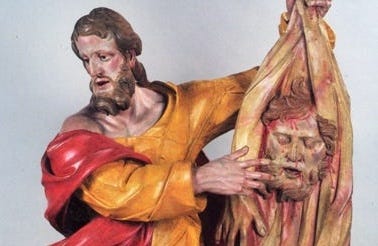


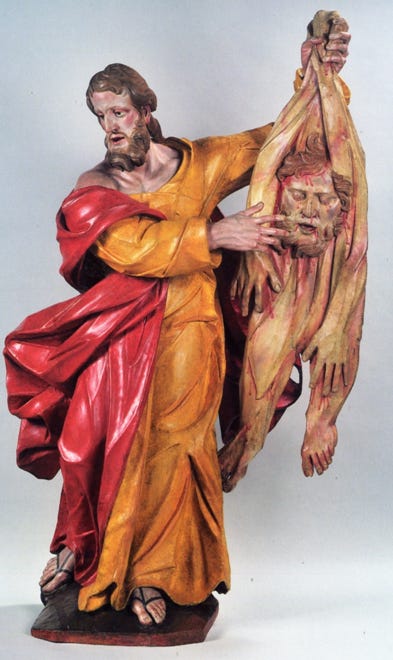
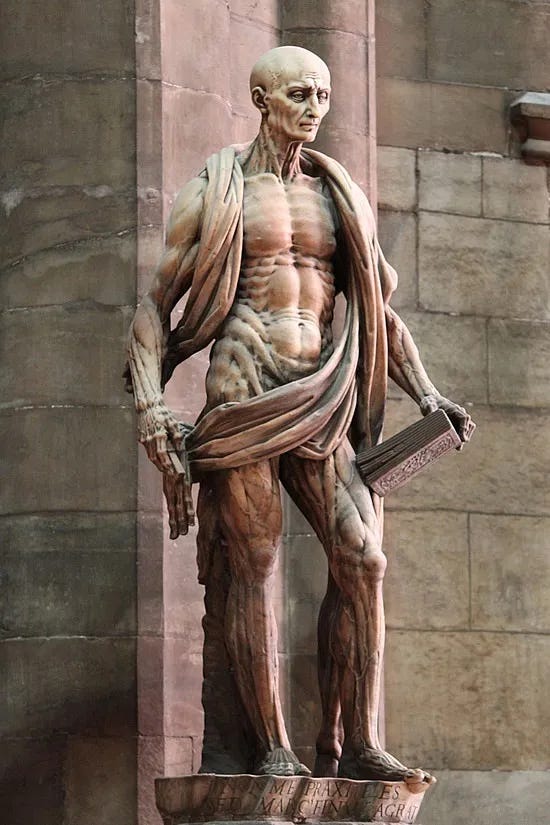
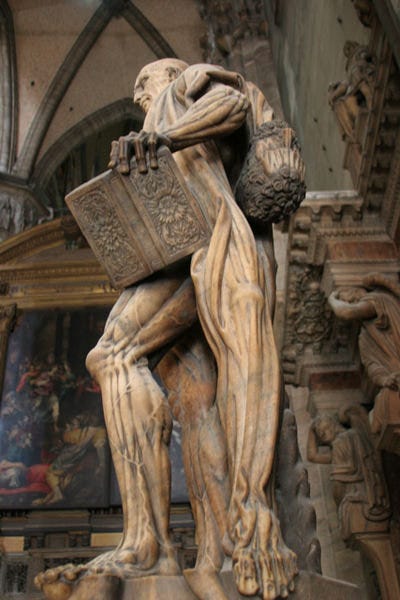
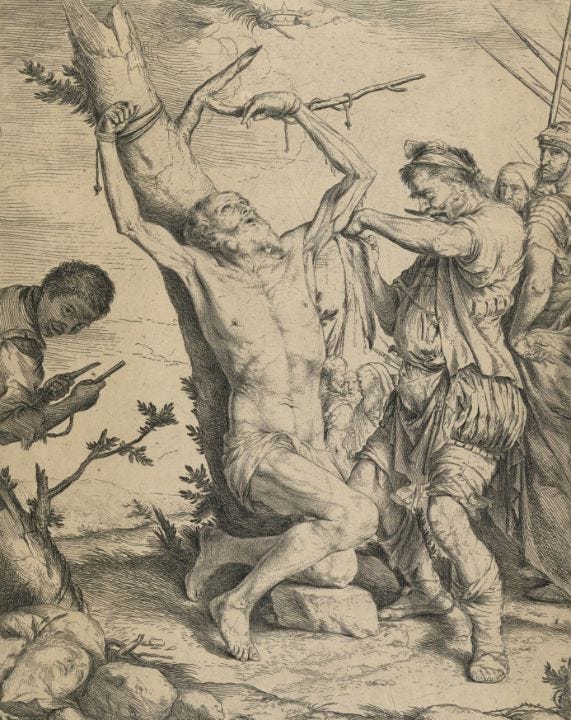
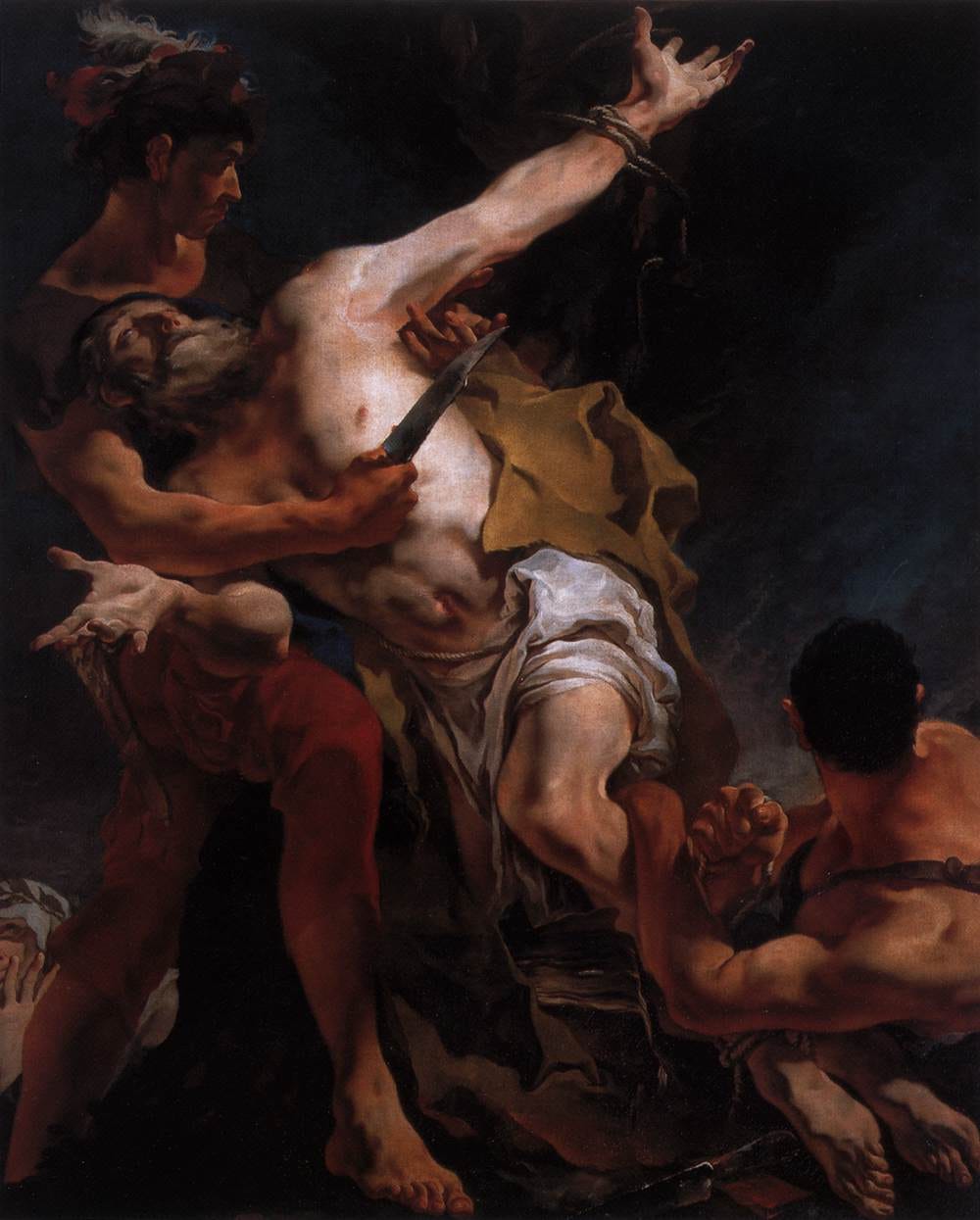
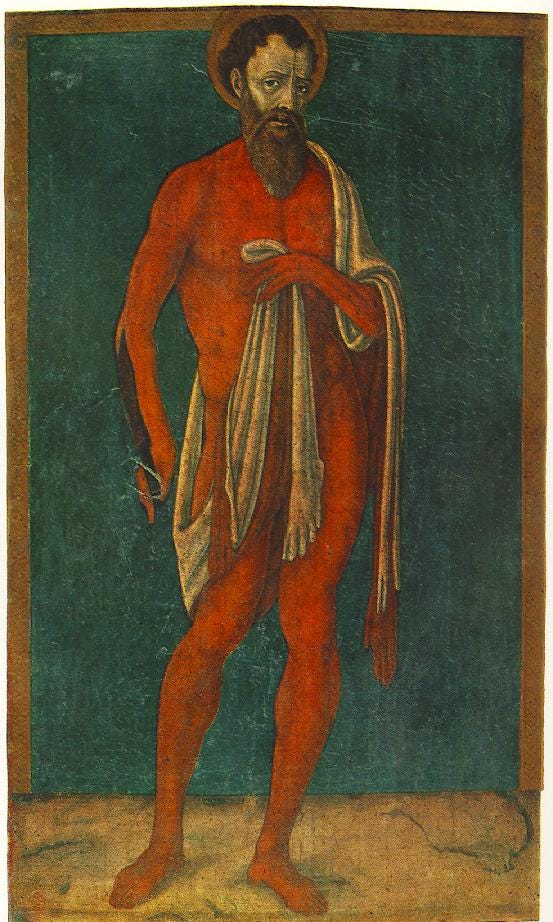
Michelangelo, famously, made a portrait of himself in the flayed skin of St. Bartholomew in the Last Judgement, Sistine Chapel.